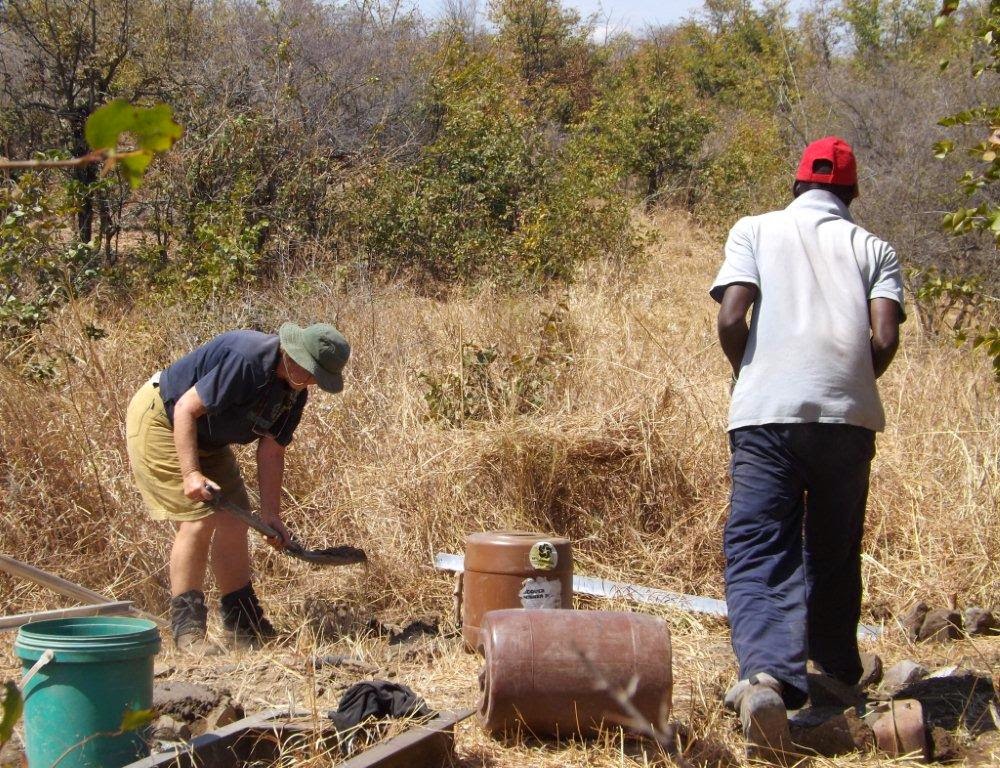OK, my ‘Smith’s Mine’ post worked so here
goes for the next instalment.
A lot happened in the six months gap
between blog posts so I’ll just use a few of Sue’s nicer animal photos for this
one…….
The dry season is, of course, the best time
to see lions as they hang around at the water points and wait for their next
meal to come along. We met this nice male near Salt Spring one morning……..
A
lot of lion sightings are just a patch of tawny fur and the occasional flick of
an ear in the shade of a bush but early on a mid-winter morning even the lions
are awake and it was a pleasure to watch this one walking through the bush.
At
Masuma the lions killed a buffalo just behind the dam wall where they were
invisible from the viewing platform. Occasionally one or two of them would come
to the water for a drink……
But a great deal of the time they were
intimidated by some of the dam’s resident hippos
The
viewing platform soon filled up with tourists and we changed from lion watching
to people watching. Wild animals are wonderful but sometimes people are even
better!
Just last week we were passing Masuma and the attendant warned us that
there was a sick lion near the road. Down by the bridge we found one of the
males walking slowly towards the shade with his face swollen, one eye
completely shut and the other almost closed as well
By
mid afternoon he was worse, struggling to breathe and obviously suffering. He
died an hour or so later. It seems he was probably kicked in the head by a
large animal and died from the effects of the kick but there was a slight
possibility of disease so samples were taken and sent away for testing. This
sort of tragedy happens all around the Park every day of course, usually with
the predators coming out of it on top but most of the time we are not aware of
it. At Sinamatella my friends the baboons have quietly played out a little
tragedy of their own.
Baboons are apparently devoted mothers. Back in July, Sue saw one of the
females of our local troop carrying a dried up dead baby. We saw her many times
over the next few weeks. At first she carefully put the baby down when she
stopped to feed then picked it up and ran or walked with it in her arms.
Eventually she became more careless and started carrying it in her mouth…
Finally she must have given up and dumped
the remains as we haven’t seen her carrying the baby for a couple of weeks
though we see the baboons often.
Time for some nicer pictures I think.
Sue selected this zebra as one of her favourite pictures. I asked her
why and she said ‘because I like it’. Can’t argue with that………
This one, I like…..
And this one as well…….
The
elephant and herd of buffalo were at the top end of Mandavu Dam. We haven’t
seen all that many of either species this season because last year’s rains were
so good there is still, after nearly six months without any rain at all, good
natural water in a lot of places and there has been no need for animals to move
to Sinamatella. It has also been a surprisingly cool dry season. Even now in
mid October we are only experiencing temperatures in the low thirties. The
highest I have measured so far was thirty nine but that hot spell only lasted a
couple of days. Some people are saying that’s a good sign for the coming rainy
season, some say the opposite. We’ll see and if I can keep uploading photos to
the blog, I’ll let you know.




































